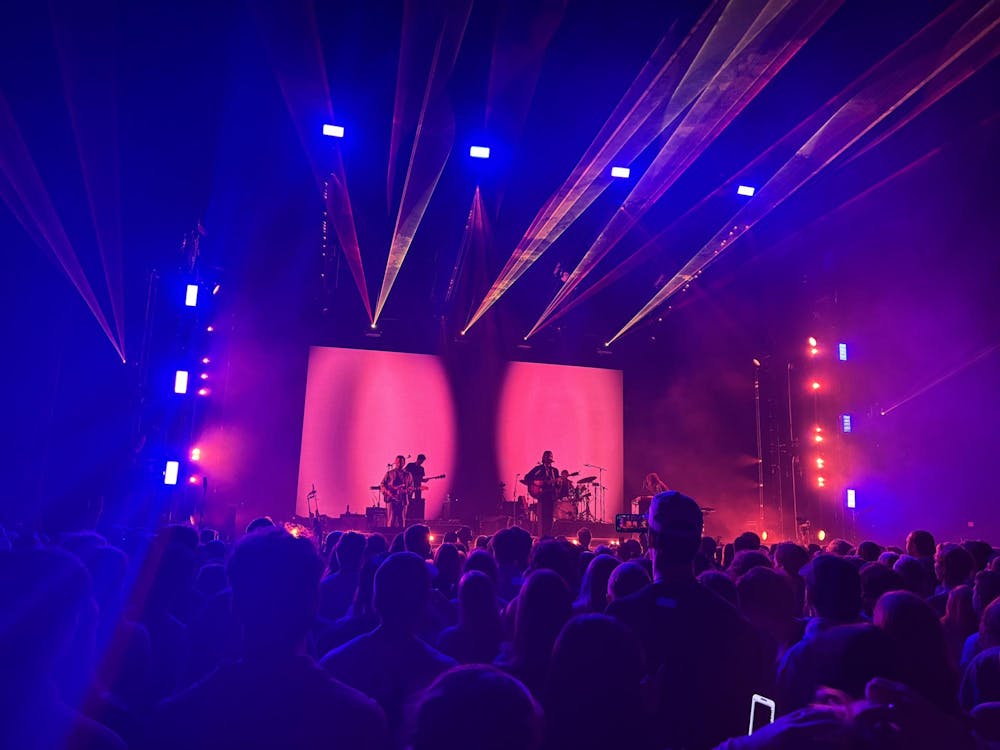Anyone who has spent a summer in Charlottesville knows that the city, though it may quiet down, continues on after students leave for break. Charlottesville in the summer provides residents with a multitude of fun activities — peach picking, wine tasting and outdoor events on the Downtown Mall are only a few things that make spending a summer here a memorable experience.
As the weather became warmer, an increasing number of people flocked to the nTelos Pavilion for “Fridays After 5.” The summer-long weekly event offers the public an opportunity to see small bands free of charge in a series of concerts that run from late April until mid-September. Charlottesville’s own Love Canon graced the stage at one point, as well as a number of bands from out of town, such as Folk Soul Revival from southwest Virginia. The final concert, indie folk rock band The Hill and Wood, is slated for Sept. 13.
A number of bigger acts also visited Charlottesville this summer. Grace Potter and the Nocturnals, known for the powerful vocals of the band’s namesake, played the nTelos Pavilion on Aug. 14, while other well-known artists, such as Loretta Lynn and Gregory Alan Isakov, made stops in Charlottesville on their national tours.
Live Arts, Charlottesville’s best-known live theatre, had a great summer season as well. The performances ranged from hard-hitting to comedic as the theatre tackled well-loved shows such as “August: Osage County” and the bubbly and fun “Legally Blonde.” Live Arts also teamed up with Offstage Theatre Company to produce “Barhoppers,” a series of skits written by local playwrights and performed in bars throughout the city, such as The Local and Rapture. This unique event, which has now been a staple for 17 years, makes theatre accessible to patrons while they are belly up to the bar. Audiences are better with a drink in hand anyway, right?
While musical art scene certainly was booming this summer, the visual art scene in Charlottesville excelled as well. Second Street Gallery showed the work of well-known photographer Gregory Crewdson, an artist whose work has been in the Museum of Modern Art, the Metropolitan Museum of Art and the Whitney Museum. Chroma Projects featured the work of Dutch artist Dymph de Wild, who has shown her eccentric sculptures in galleries in Washington, New York, Belgium and the Netherlands, to name a few.
The Bridge Progressive Arts Initiative, another local space for contemporary art, held “Storm the Bridge,” an initiative to usher in a new period in creativity in Charlottesville, on July 26. The event, inspired by the storming of the Bastille during the French Revolution, aimed to break down the barriers that hold back artistic expression in the community and open up new doors for art and culture. The Storming of the Bridge included a march through Charlottesville, proclamations of artistic freedom and, of course, a guillotine.
Not all news from the arts community was lighthearted and lyrical, however. This summer, Vinegar Hill Theatre announced they would close their doors on Aug. 4 after a 37-year run. The theatre, which was opened in 1976, offered an unparalleled intimate atmosphere. Vinegar Hill was known for showing independent and foreign films and also showed films during the Virginia Film Festival.
The theatre cited the growth of large cinemas as a factor in the decision to close their doors, claiming that the small, local theatre was struggling amidst chain competitors such as Regal Cinemas. The loss of Vinegar Hill sends a clear message about preserving local arts and maintaining the history and character of Charlottesville’s arts scene. Hopefully, this historic theater’s closing will renew our appreciation for this beautiful and irreplaceable city’s landmark artistic experiences.






